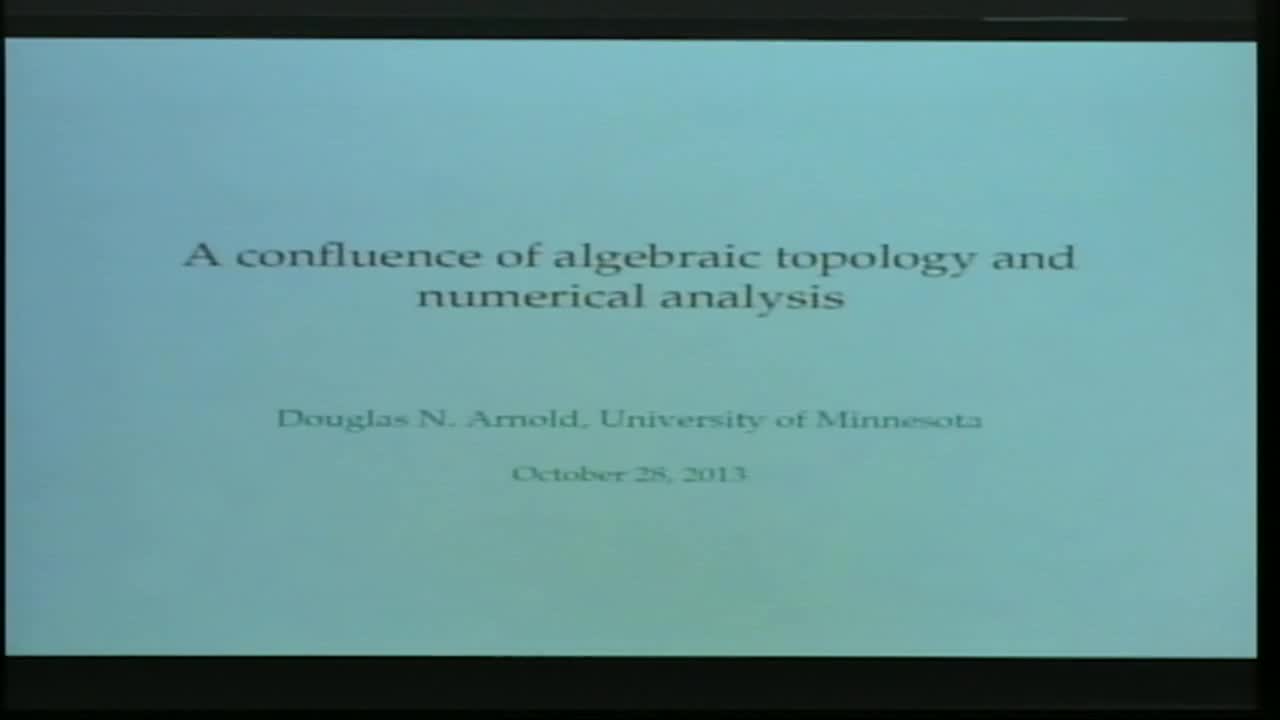A Confluence of Algebraic Topology and Numerical Analysis
Presenter
October 28, 2013
Keywords:
- Algebraic Topology, Numberical Analysis
MSC:
- 46M20
Abstract
This talk will discuss a substantial interplay of algebraic topology with numerical analysis which has developed over the last decade. During this period, de Rham cohomology and the Hodge theory of Riemannian manifolds have come to play a crucial role in the development and understanding of computational algorithms for the solution of problems in partial differential equations. Hodge theory is at the foundation of the well-posedness of many important problems in partial differential equations, but only recently has it been understood how the stable numerical solution of PDE problems often depends on capturing the correct topological structures at the discrete level. This may be accomplished by constructing subcomplexes of the de Rham complex which consist of finite element differential forms. These latter have become a key technology in scientific computation, but first appeared in algebraic topology in the works of Whitney and Sullivan half a century ago. Interactions of topology and numerical analysis are not just applications of the former to the latter, but also occur in the reverse direction. Recently, the theory of superconvergence developed for finite element methods was used to settle a question concerning the combinatorial codifferential posed by Dodziuk and Patodi in 1976.
